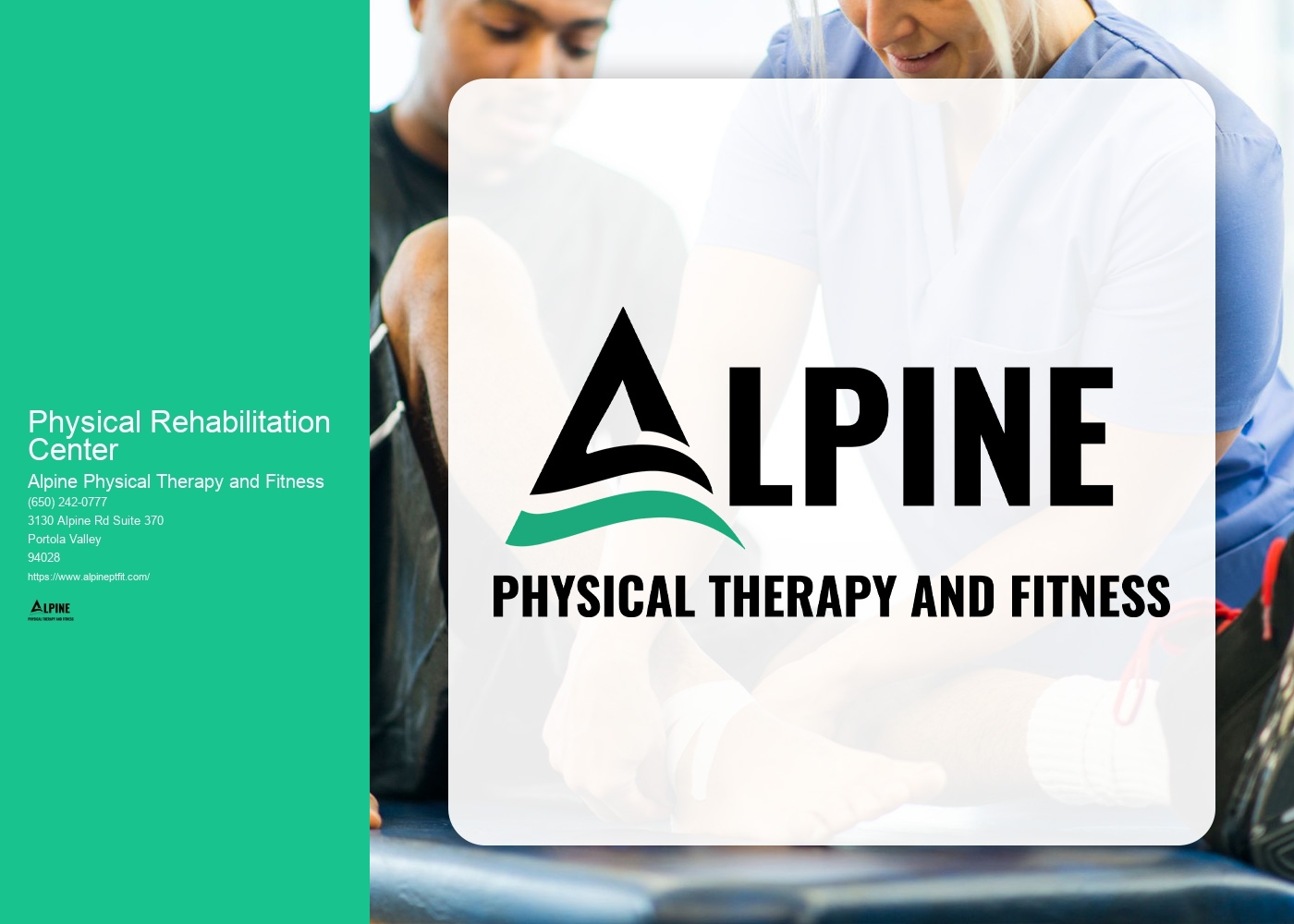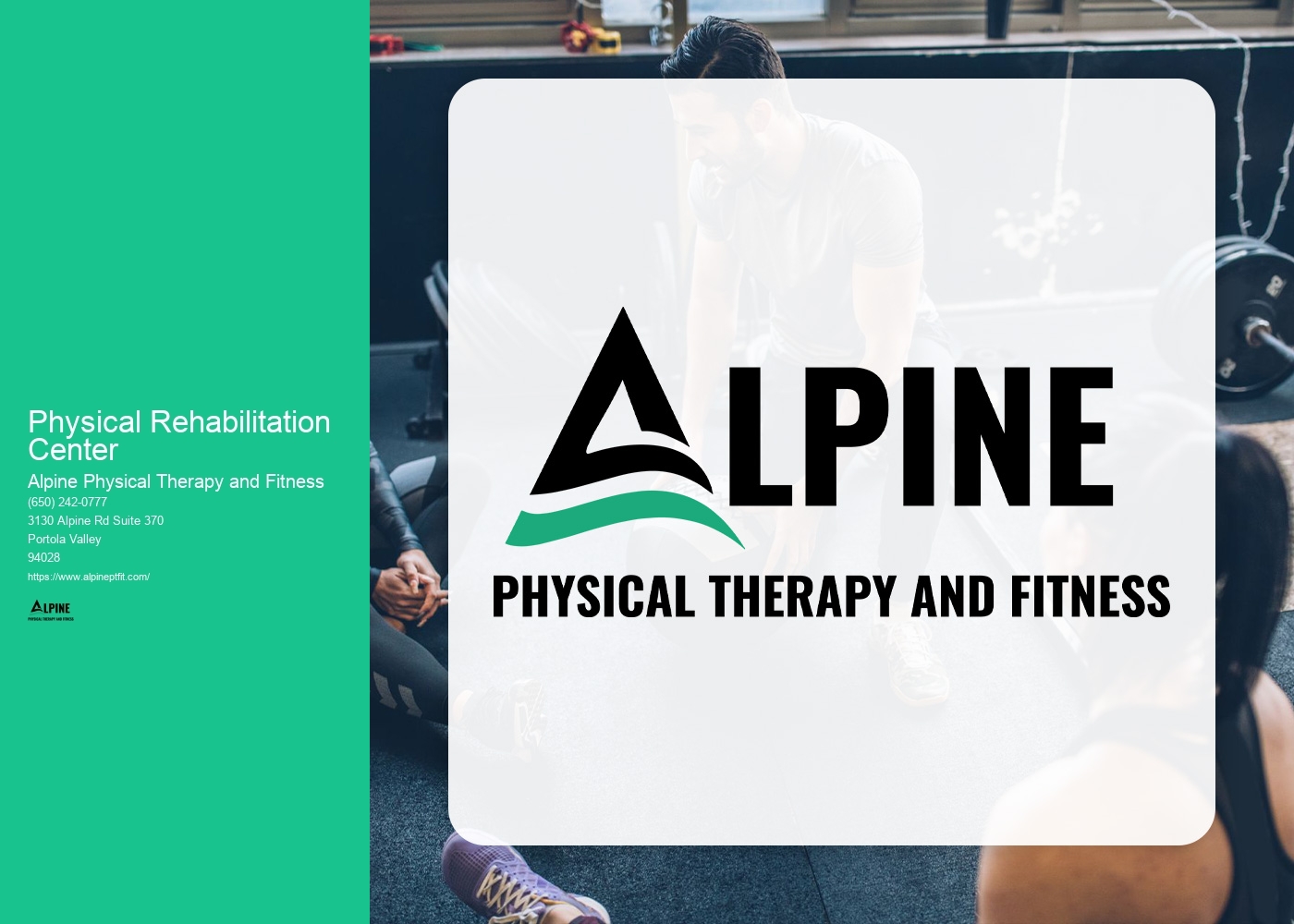

At our physical rehabilitation center, we specialize in treating a wide range of injuries and conditions. Our team of experienced physical therapists is skilled in addressing musculoskeletal injuries, such as sprains, strains, and fractures, as well as chronic conditions like arthritis and fibromyalgia. We also provide rehabilitation for post-surgical patients, including those who have undergone joint replacements or spinal surgeries. Additionally, we offer specialized programs for individuals recovering from sports-related injuries, such as ACL tears or rotator cuff injuries.
In our rehabilitation programs, we utilize a variety of exercises and therapies tailored to each individual's needs. Commonly used exercises include range of motion exercises to improve flexibility, strengthening exercises to build muscle strength and stability, and balance and coordination exercises to enhance motor skills. We also incorporate manual therapy techniques, such as joint mobilization and soft tissue mobilization, to reduce pain and improve mobility. Additionally, we may incorporate modalities like ultrasound or electrical stimulation to aid in the healing process.
The duration of a typical rehabilitation program can vary depending on the severity of the injury or condition and the individual's progress. Generally, a program may last anywhere from a few weeks to several months. The frequency of sessions will also depend on the specific needs of the patient, but typically, patients attend rehabilitation sessions two to three times per week. Our goal is to provide comprehensive care and support throughout the rehabilitation process, ensuring that each patient receives the necessary attention and guidance to achieve optimal recovery.

We understand the importance of affordability and accessibility in healthcare, which is why we accept insurance from a variety of providers. We work with major insurance companies, including but not limited to Blue Cross Blue Shield, Aetna, Cigna, and UnitedHealthcare. Our dedicated staff is available to assist patients in verifying their insurance coverage and navigating the billing process. We strive to make the rehabilitation experience as seamless as possible, allowing patients to focus on their recovery without added financial stress.
Our physical therapists are licensed professionals with extensive experience in treating a wide range of conditions. They undergo rigorous training and education to stay up-to-date with the latest advancements in physical therapy. Whether you require treatment for a specific condition like a rotator cuff tear or are seeking general rehabilitation, our therapists have the expertise and knowledge to provide effective care. They will work closely with you to develop a personalized treatment plan that addresses your unique needs and goals.

We are proud to share testimonials and success stories from previous patients who have undergone rehabilitation at our center. These stories highlight the positive impact our programs have had on their lives, from regaining mobility and independence to returning to their favorite activities pain-free. Our patients have expressed their appreciation for the compassionate and skilled care they received from our physical therapists. We believe that these testimonials serve as a testament to the quality of our services and the dedication of our team.
In addition to our rehabilitation services, we offer a range of additional resources to support the rehabilitation process. We understand that recovery is a holistic journey, and we strive to address all aspects of our patients' well-being. Our center provides nutritional guidance to help patients optimize their diet and promote healing. We also offer mental health counseling to address any emotional or psychological challenges that may arise during the rehabilitation process. Our goal is to provide comprehensive care that addresses the physical, emotional, and nutritional needs of our patients, ensuring a successful and well-rounded recovery.

Physical therapy can be an effective treatment option for alleviating pain associated with osteoporosis. Osteoporosis is a condition characterized by a decrease in bone density, which can lead to increased fragility and susceptibility to fractures. Physical therapy interventions, such as exercises targeting strength, balance, and posture, can help improve bone health and reduce pain. Additionally, physical therapists may use modalities such as heat or cold therapy, electrical stimulation, or manual therapy techniques to further alleviate pain and improve function. By addressing the underlying causes of pain and promoting bone health, physical therapy can play a crucial role in managing pain associated with osteoporosis.
Physical therapy plays a crucial role in the management of peripheral neuropathy. By utilizing a combination of targeted exercises, manual therapy techniques, and specialized equipment, physical therapists can help individuals with peripheral neuropathy improve their strength, balance, and coordination. These exercises and techniques focus on improving blood flow, reducing pain, and increasing nerve function. Additionally, physical therapists can provide education on proper body mechanics and ergonomics to minimize further nerve damage. By addressing the underlying causes of peripheral neuropathy and providing personalized treatment plans, physical therapy can significantly improve the quality of life for individuals living with this condition.
The approach to treating individuals with hip impingement syndrome involves a comprehensive and multidisciplinary approach. The primary goal of treatment is to reduce pain, improve function, and prevent further damage to the hip joint. Non-surgical interventions such as physical therapy, activity modification, and anti-inflammatory medications are often the first line of treatment. Physical therapy focuses on strengthening the hip muscles, improving range of motion, and correcting any biomechanical abnormalities. In some cases, corticosteroid injections may be used to provide temporary pain relief. If conservative measures fail to alleviate symptoms, surgical intervention may be considered. Surgical options include arthroscopic procedures to remove or repair damaged tissue, as well as hip resurfacing or total hip replacement in severe cases. The choice of treatment depends on the severity of the impingement, the individual's age and activity level, and their overall health. A personalized treatment plan should be developed in collaboration with a team of healthcare professionals, including orthopedic surgeons, physical therapists, and pain management specialists, to ensure the best possible outcome for the individual.
Physical therapy plays a crucial role in improving the quality of life for patients with Parkinson's disease. By incorporating a range of specialized exercises and techniques, physical therapists can address the unique motor and movement challenges faced by individuals with Parkinson's. These exercises focus on improving balance, coordination, flexibility, and strength, which are often affected by the disease. Additionally, physical therapy can help manage symptoms such as rigidity, bradykinesia, and tremors, allowing patients to regain control over their movements. Through targeted interventions, physical therapy can also enhance gait and posture, reducing the risk of falls and improving overall mobility. Moreover, physical therapists provide education and guidance on adaptive strategies and assistive devices, empowering patients to navigate daily activities more independently. Overall, physical therapy offers a comprehensive approach to managing Parkinson's disease, promoting functional independence, and enhancing overall well-being.
Physical therapy can be highly beneficial in improving balance in individuals with multiple sclerosis. Multiple sclerosis is a chronic neurological condition that can lead to impaired balance and coordination. Physical therapists are trained to assess and address these specific issues through a variety of techniques and exercises. They may focus on improving core strength, flexibility, and proprioception, which are all crucial for maintaining balance. Additionally, physical therapists may use specialized equipment such as balance boards or stability balls to challenge and improve balance. By targeting these areas, physical therapy can help individuals with multiple sclerosis regain stability and reduce the risk of falls, ultimately enhancing their overall quality of life.
Physical therapists employ a variety of techniques to effectively treat common sports injuries such as sprained ankles. They typically begin by conducting a thorough assessment of the injury, taking into account factors such as the severity of the sprain, the individual's overall health, and any previous injuries. Treatment may involve a combination of manual therapy techniques, such as joint mobilization and soft tissue massage, to reduce pain and inflammation. Therapists may also utilize therapeutic exercises to improve strength, flexibility, and balance, helping to restore normal function and prevent future injuries. Additionally, modalities such as ultrasound or electrical stimulation may be used to further aid in the healing process. Education and guidance on proper body mechanics and injury prevention strategies are also integral components of a physical therapist's approach to treating sprained ankles.